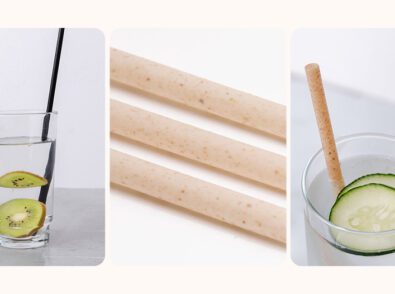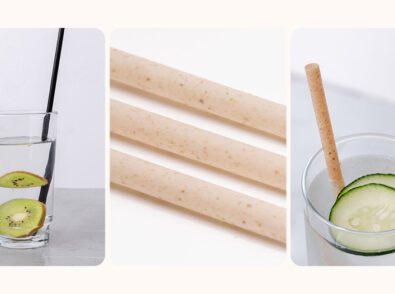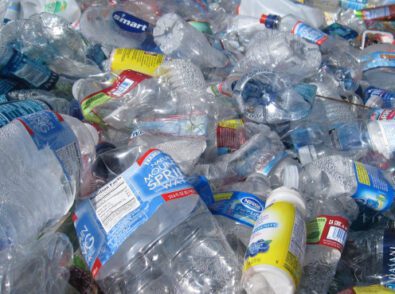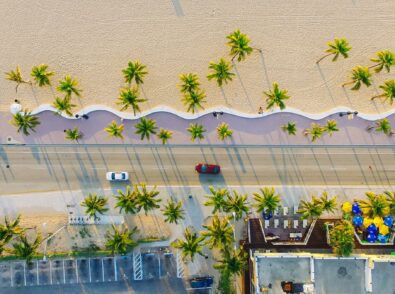Compostable vs. Recyclable vs. Biodegradable: What’s the Difference?
What Does Compostable Mean?
Compostable products are products that can undergo aerobic biological decomposition. In other words, they decompose naturally over time in the presence of oxygen. This process can occur in a compost system where all the material breaks down into the basic parts—biomass, water, carbon dioxide (CO2), and inorganic compounds—which are all nutrients the earth can absorb naturally.
When products are compostable, they break down at a normal rate for similar organic matter. They also do not release harmful toxins when they break down in a natural system.
Because compostable means something very specific, the laws around classifying items as such are quite strict. The American Society for Testing and Materials (ASTM) International defines which plastic products can claim compostability on their labels. Under ASTM D6400-21, a plastic product must receive Biodegradable Products Institute (BPI) certification by undergoing precise tests. These products must be able to break down in industrial composting facilities within 180 days to be certified compostable.
Trademarks of Compostable Products
Some people and businesses conflate the term compostable with another—biodegradable. While these terms hold different meanings, they share common threads that cause their misuse.
One of the reasons why compostable and biodegradable are often used interchangeably is that all compostable products are biodegradable. The difference is important, though, as not all biodegradable products are compostable. As you explore the differences, you will see that this is mainly related to how the materials decompose and what their residual makeup looks like after decomposition. So, what makes a product compostable? What does compostable mean?
How You Can Compost
Composting is an effective way to reduce your household waste and have a more sustainable lifestyle. Composting is easy, too, especially when following these helpful tips:
1. Shop Compostable Products
A great starting point is purchasing products that you can add to your compost heap! Thankfully, manufacturers are making many products compostable, like compostable agave straws and compostable packaging.
2. Choose a Spot for Your Compost Heap
Choose a space in your yard to create your compost heap. You can use a compost bin, but that is purely optional. Most of the time, you can simply pile your compostable items in a heap on the soil. If you would like, you may also use some wooden slats to cordon off the small section of the yard you would like to use for compost.
3. Save Your Compost Ingredients
It may be helpful to have a jar in your kitchen for storing compostable materials as you use them and then empty it into the compost heap as it fills up. You can store vegetable scraps, seaweed, eggshells, flour, cooked, and uncooked pasta, nutshells, loose tea, or compostable tea bags and coffee grounds in your kitchen container. You can also compost shredded paper, compostable paper cups, non-glossy cardboard, dry leaves, plant cuttings, old flowers, grass clippings, and sawdust from untreated wood. Avoid dairy and meat products, grease, and inorganic materials.
4. Choose Between Hot and Cold Compost
Hot or active composting comes from using the right ratio of green materials that are nitrogen-rich and brown materials that are carbon-rich to raise the internal temperature of the compost heap to up to 160°F (71°C). With an active compost heat, you also need to move the materials from the center to the edges of the heap every other week or so. With a cold compost heap, you add material in any ratio and hardly move the materials around—which is why cold composting is also called passive compositing. Cold composting naturally takes longer than hot composting.
5. Consider Alternative Composting Methods
You can also use worms for composting and explore different methods, sizes of compost heaps, and various appropriate materials to discover what works best for you.
Benefits of Composting

Composting leads to a range of environmental benefits:
- Plant growth: Composting enriches the soil and promotes healthier plant growth and higher crop yields. It also reduces the need for chemical fertilizers in the process.
- Soil health: Composting can help remediate contaminated soil. The composting process may absorb odors, treat volatile organic compounds (VOCs), and degrade preservatives and pesticides. It can even bind heavy metals and prevent plants from absorbing them or stop the metals from contaminating water sources.
- Waste reduction: Composting reduces waste and helps divert materials from landfills that contribute to pollution and other environmental issues, including climate change.
- Stormwater management: Composting can be beneficial for stormwater management since it helps control water flow through and on soil.
- Water conservation: Because composting helps soil retain and transfer water, it can aid water conservation.
Drawbacks of Composting
While composting produces numerous advantages, there are drawbacks to consider when applying the practice on an industrial scale:
- The need for specialized equipment, personnel, and space
- The production of pungent odors that may disrupt communities and attract animals
What Is Biodegradable?
Biodegradable means materials break down into increasingly smaller pieces by living organisms like microbes, bacteria, and fungi. Unlike compostable products, a material can biodegrade with or without the presence of oxygen. A wide range of products are biodegradable—even items like disposable coffee cups and packing peanuts can classed as biodegradable. Additionally, most materials will biodegrade, given enough time.
Differentiating Between Biodegradable and Compostable
Biodegradable is a distinct classification. Still, some individuals and businesses use the term loosely. The confusion becomes problematic when a company uses one of the two terms to make inaccurate claims about a product.
The main issue with consumers and companies using terms like compostable and biodegradable interchangeably is that biodegradable products aren’t necessarily good for the environment.
For example, some plastics are biodegradable, but that doesn’t make them safe for the environment. Over a couple of years, they can break down into tiny microplastics and be potentially more harmful to the environment than plastics that have not biodegraded. This is because it is easier for animals like birds and sea creatures to consume these small pieces of plastic.
Another concern is that some products labeled as biodegradable are only biodegradable under very specific conditions. Some may need water to biodegrade, and the product won’t break down completely if the right conditions aren’t present. Overall, the term biodegradable can be problematic because it is vague about how long it takes a product to break down, what the most conducive circumstances are for the product to break down, and what the product breaks down into.
Despite environmental safety concerns, some businesses attempt to market their biodegradable products as compostable, which misleads consumers. Meanwhile, consumers make uninformed purchases and use improper disposal methods when they lack a nuanced understanding of the terms biodegradable and compostable.
Choosing Biodegradable Products
Thankfully, it is not all doom and gloom surrounding biodegradable products—all compostable products are biodegradable, and some biodegradable products can break down without negative consequences. The key is knowing what to look for when you choose biodegradable products:
- Look at the material composition: Choose biodegradable products made from natural resources, including plant-based materials like agave or cornstarch.
- Look at the decomposition time: Opt for products that decompose relatively quickly. Choosing something that takes months or a year to decompose is better than items that would take multiple years—some up to several hundred years—to decompose.
- Consider the product’s disposable methods: Check the product’s details to understand the conditions that help the product decompose as intended. Research products or contact the manufacturer to learn if the item is compostable in a commercial facility, compostable at home, or recyclable.
- Opt for products from a trusted brand: With any product, researching the manufacturer’s values and processes goes a long way. Opt for a reliable brand that believes in sustainability and backs that with quality, eco-friendly products.
Benefits of Biodegradable Materials

Despite the misconceptions surrounding some biodegradable products, there are still countless benefits to choosing biodegradable items—especially regarding plastics:
- Focus on waste reduction: Biodegradable plastics produce less waste than plastics that are not considered biodegradable or take too long to biodegrade. Because biodegradable plastics decompose relatively quickly, there is less chance they will end up in landfills.
- Less environmental harm: The majority of biodegradable plastics contain less harmful chemicals. Some biodegradable plastics do not even contain the pollutants traditional plastics do, and they are free of bisphenol A (BPA) and chemical phthalates such as BBP, DBP, and DIBP. These chemicals are known health hazards and harmful to the environment.
- Focus on reusing: Many products, such as biodegradable plastic bags, help establish a mindset of reusing products and promoting a circular economy. With traditional plastics, for example, there is a single-use mindset that leads to more and more waste.
Drawbacks of Biodegradability
A biodegradable product’s advantages coincide with some drawbacks, including:
- The potential for toxic microplastics as a byproduct.
- The extensive amount of time, sometimes centuries, that some products require to biodegrade.
What Is Recyclable?
Recycling is not a new concept, but it is one that has continued to evolve to be more accessible, commonplace, and—in some regions—even mandatory. A recyclable product or material is one that can be separated from the general waste stream and repurposed through a recycling program. With recycling, we separate our waste into different categories, such as paper, plastic, and metal, so these old or discarded resources can be converted into new materials.
How You Can Recycle
One of the best features of recycling is the various ways you can convert materials into new, usable items. For example, you could donate products you no longer need or repurpose items by finding new, creative ways to use old products instead of discarding them.
If you do choose to recycle, these simple tips can ease you into the process:
- Know what to recycle: Knowing what you can recycle before separating your recyclables is important. Generally, you can recycle plastics that have the numbers 1, 2, and 5 inside the recycling arrows, all food and beverage metal cans, colored glass that is not broken, cardboard, newspaper, most greeting cards, scraps of paper, magazines, and paper food containers and cartons. Be sure to check your municipality’s rules for curbside recycling.
- Get your recycling ready: Empty, clean, and dry all your recyclable materials before separating them into the appropriate recycling bins or bags.
- Know what you cannot recycle: Avoid adding certain products to your recycling bins, including biohazardous waste like used needles or COVID-19 tests, human or animal waste such as diapers, building rubble, discarded hygiene products like wet wipes or cotton buds, batteries, plastic toys, light bulbs, and any broken glass.
It may be surprising that some items that can be recycled—like batteries—are included on the list of what you should not recycle. This simply means most batteries should not go in your household recycling bins. You can, however, take them to designated drop-off locations or collection points for household hazard waste.
Recycling can also look different for various industries. While you may not be able to add items like building rubble to your recycling bins, specialized facilities exist for these types of industrial recycling processes.
Benefits of Recycling
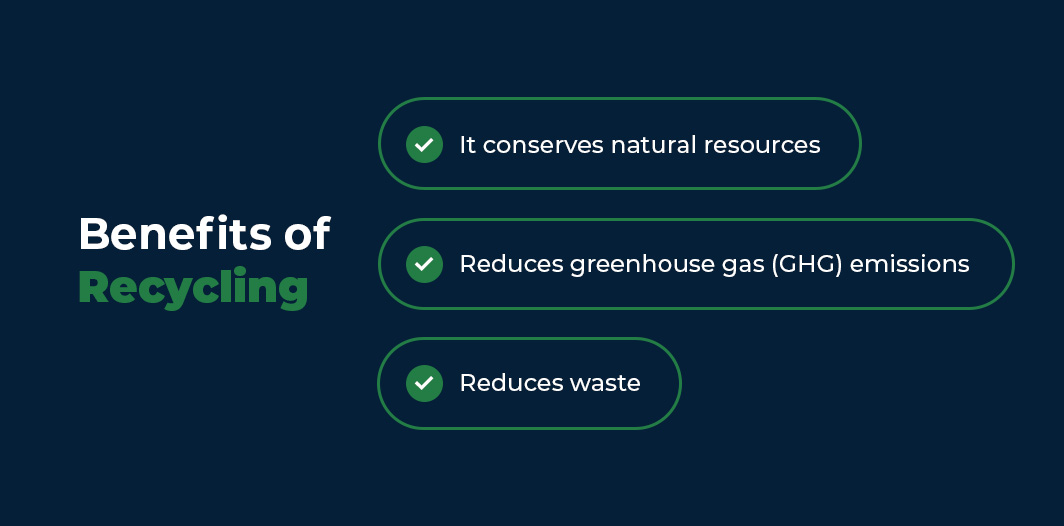
Recycling may not be a completely efficient process, but it is an extremely advantageous practice for several reasons:
- It conserves natural resources: Recycling is an excellent way to conserve natural resources and raw materials. Instead of having to source raw materials from natural resources like trees and metals, we can get these materials from existing products when we recycle. For example, we can recycle paper rather than growing and cutting down more trees, or we can recycle soda cans to get aluminum.
- Reduces greenhouse gas (GHG) emissions: Because recycling conserves raw materials, it naturally reduces GHG emissions. Converting raw materials into usable products—like getting wood from trees—creates a huge carbon footprint. Conversely, recycling items lessens the need for these processes.
- Reduces waste: As with compositing and biodegradable products, recycling ensures fewer products end up in landfills. Landfill waste is a major environmental concern as it contributes to GHG emissions, health, and safety hazards, and a reduction in the value of surrounding areas.
Drawbacks of Recycling
Recycling plastics, metal, and paper provides numerous advantages but also comes with practical limitations:
- Proper separation is difficult to achieve consistently and on a large scale.
- Some communities, especially poor or rural areas, have limited access to recycling facilities.
FAQ
Explore more about eco-friendly products and how you can do your part for the environment with these frequently asked questions:
Does My Business Need Compostable and Biodegradable Products?
Compostable and biodegradable products are great replacements for the less sustainable materials of the past. Your company can use these products to reduce its environmental impact and spread awareness. In some cases, your state or city may require you to use compostable or biodegradable items. For example, foodservice businesses in Berkeley, California, must use products certified by (BPI) when providing single-use takeout foodware.
Sustainable products are particularly useful and accessible in the foodservice industry that relies heavily on single-use foodware. Manufacturers like Greenprint make sustainable foodservice products more reliable and accessible than ever. We produce various types of straws, plates, cutlery, cups, clamshell containers, and numerous other products that feature biodegradable or compostable materials.
How Can I Purchase Compostable, Biodegradable, and Recyclable Products for My Business?
You can purchase compostable, biodegradable, and recyclable materials from a manufacturer like Greenprint. We provide detailed information on our various products online. Our sales team is available to help you determine which products and materials will suit your business. From there, you can place an order through your preferred foodservice distributor. We will ship your order to the foodservice distributor who will then transport it to your business.
Are Compostable and Biodegradable Products Durable?
One of the concerns consumers have is that compostable or biodegradable products aren’t durable or high-quality. Thankfully, this couldn’t be further from the truth! When you shop for products from trusted brands with a vision, like Greenprint, you get quality disposables that last.
Do You Have Marine Biodegradable Products?
Yes! How our waste affects the oceans and marine life has been a concern for many years, and some biodegradable products may be appropriate for soil but not for marine life. At Greenprint, our PHA straws are internationally certified as marine biodegradable and soil biodegradable, meaning you can use them for compost, too.
What Can I Do If I Can’t Compost or Recycle?
Everybody’s abilities and resources are different. Understandably, composting and recycling aren’t always viable options, depending on your circumstances. However, there are other things we can all do that positively impact the environment and help others! You could repurpose items or donate the products you no longer need to charities. What’s no longer useful to you may be someone else’s treasure!
Another option is to shop for biodegradable items. Even if you can’t compost or recycle, these products are sustainable and have significantly less impact on the planet.
Greenprint Disposables for Promoting Sustainable Practices
Are you ready to compost, recycle, or use biodegradable products?
At Greenprint, we aim to be forward-thinking and innovative in designing and manufacturing more sustainable disposables. Our range of high-quality disposable products includes biodegradable paper cups made from agave, compostable plates, biodegradable cutlery, straws, and stirrers. We source our materials locally, which benefits communities and the environment.
With our products, you can sectors like the restaurant industry and transform households by making sustainable disposables part of daily use. Browse our collection of eco-friendly disposables, or contact us today for any support.
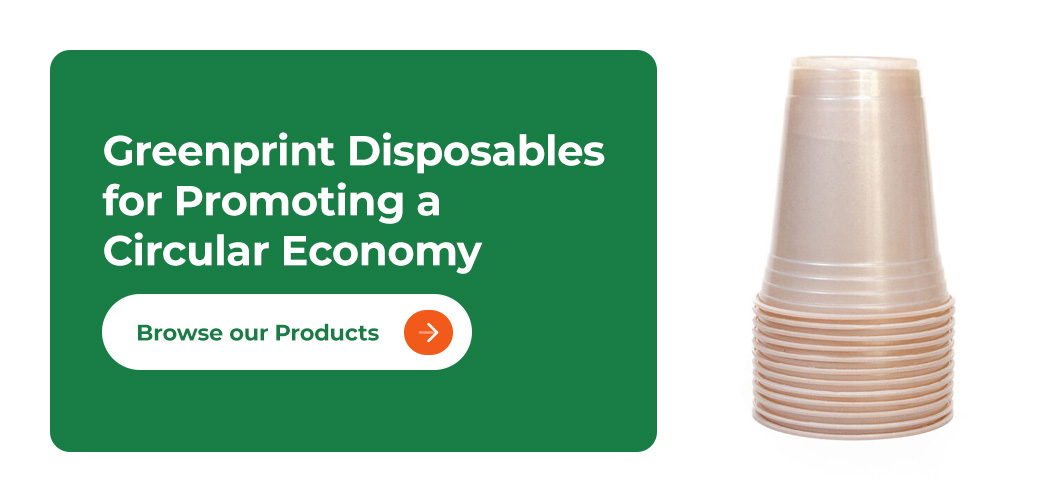
References
- https://www.astm.org/d6400-21.html
- https://bpiworld.org/commercial-compostability-certification-scheme
- https://bpiworld.org/biodegradable-vs-compostable
- https://www.compostingcouncil.org/page/StormwaterBenefits
- https://www.eea.europa.eu/publications/peoples-exposure-to-bisphenol-a/
- https://www.epa.gov/recycle/how-do-i-recycle-common-recyclables
- https://www.colorado.edu/ecenter/2021/04/15/hidden-damage-landfills#
- https://berkeleyca.gov/doing-business/operating-berkeley/food-service/single-use-foodware-rules


